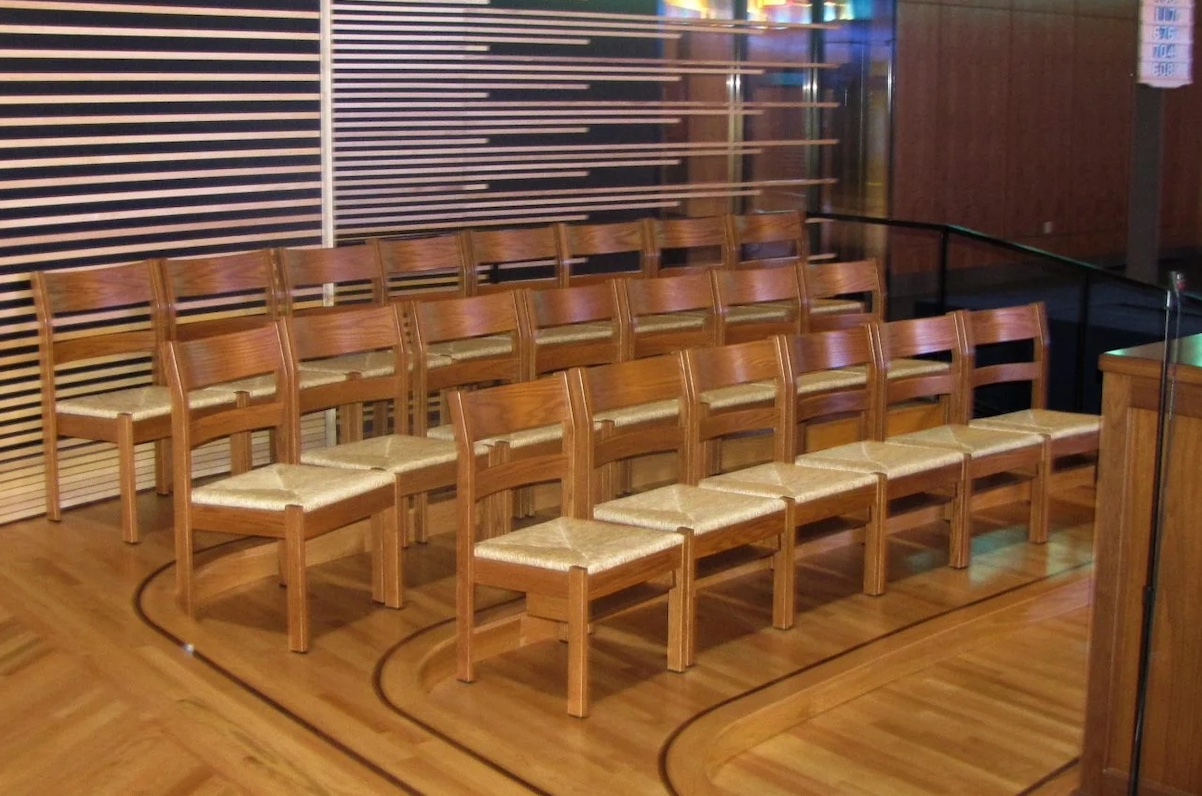Chapel seating, while often overlooked, plays a crucial role in the overall experience of a worship service. The design and arrangement of seats in a chapel influence the sense of community, the engagement of the congregation, and the functionality of the space. This article delves into the history, various design considerations, and modern trends in chapel seating, highlighting its significance in the architectural and spiritual realms.
Historical Evolution of Chapel Seating
The concept of designated seating in places of worship has evolved significantly over centuries. In early Christian churches, congregants often stood during services. The use of fixed seating was rare, with the exception of stone benches along the walls for the elderly or infirm, a practice known as "misericordia."
Medieval and Renaissance Periods
During the medieval period, the rise of monasticism brought about a need for more structured seating arrangements. Monastic choirs required orderly seating for chanting and communal prayers. Choir stalls, often intricately carved, became a common feature in larger churches and cathedrals. These stalls not only provided seating but also helped delineate the sacred choir space from the rest of the church.
The Renaissance period saw a continuation of these trends, with an increased emphasis on the artistic and architectural aspects of seating. The pew, a long bench designed to seat multiple worshippers, became more prevalent. Pews allowed for greater congregation participation and provided a sense of uniformity and order.
The Reformation and Beyond
The Protestant Reformation in the 16th century brought significant changes to church interiors, including seating arrangements. The Reformation emphasized the sermon as the central element of the service, necessitating seating that faced the pulpit. This period saw a proliferation of wooden pews, often arranged in straight rows facing the front, a design that remains common in many Protestant churches today.
Design Considerations for Chapel Seating
Designing seating for a chapel involves balancing aesthetic, functional, and spiritual considerations. The goal is to create an environment that fosters community, worship, and contemplation.
Layout and Arrangement
The layout of seating in a chapel is crucial for facilitating worship and community interaction. Several common arrangements include:
- Traditional Rows: Straight rows of pews or church chairs facing the altar or pulpit. This arrangement is straightforward and maximizes seating capacity but can limit interaction among congregants.
- Radial or Fan-Shaped: Seats are arranged in a semi-circular pattern facing the front. This layout enhances visibility and a sense of unity, as congregants can see each other more easily.
- In-the-Round: Seats encircle a central altar or stage. This arrangement fosters a strong sense of community and inclusivity, making everyone feel equally important in the worship experience.
- Flexible Seating: Movable chairs allow for a variety of configurations, accommodating different types of services and events. This flexibility is increasingly popular in modern chapels.
Comfort and Accessibility
Comfort is a key consideration in seating design. Worship services can be lengthy, and uncomfortable seating can distract from the spiritual experience. Designers must consider factors such as cushioning, back support, and legroom.
Accessibility is equally important. Chapels must provide seating that accommodates individuals with disabilities, ensuring that all congregants can participate fully in the worship experience. This includes spaces for wheelchairs, seats with armrests for those with mobility issues, and considerations for individuals with hearing or visual impairments.
Aesthetics and Materials
The materials used in chapel seating contribute significantly to the overall aesthetic of the space. Wood is a traditional choice, valued for its durability and natural beauty. Oak, maple, and cherry are popular options, each offering distinct grain patterns and colors.
Upholstered seats add comfort and can be tailored to complement the chapel's color scheme. Fabric choices range from simple, durable options to luxurious, richly patterned textiles.
Carvings and embellishments on wooden pews can add to the spiritual atmosphere, with designs often reflecting religious symbols or local cultural motifs.
Modern Trends in Chapel Seating
As society and worship practices evolve, so too do trends in chapel seating. Modern chapels often prioritize flexibility, inclusivity, and sustainability in their seating designs.
Flexibility and Multi-Functionality
Modern chapels are increasingly designed to serve multiple functions, from traditional worship services to community events, meetings, and performances. Flexible seating arrangements are essential to accommodate these varied uses. Movable chairs, stackable seating, and modular pews allow for easy reconfiguration of the space.
Inclusivity and Accessibility
Inclusivity continues to be a significant trend in chapel design. Seating arrangements now more commonly include spaces for wheelchairs, designated areas for those with sensory sensitivities, and options for those with mobility challenges. Additionally, chapels are integrating technology, such as hearing loops and screens for subtitles, to enhance accessibility for all congregants.
Sustainability
Sustainability is a growing concern in all areas of design, including chapel seating. Eco-friendly materials, such as sustainably sourced wood and recycled fabrics, are increasingly used. Additionally, designers are considering the entire lifecycle of seating, opting for materials and construction methods that minimize environmental impact.
Case Studies: Innovative Chapel Seating Designs
The Chapel of St. Ignatius, Seattle, Washington
Designed by Steven Holl, the Chapel of St. Ignatius features a unique seating arrangement that reflects the Jesuit principles of inclusivity and contemplation. The pews are arranged in a radial pattern, with gaps between sections to allow for wheelchair access. The seats are crafted from light-colored wood, creating a warm and inviting atmosphere.
Thorncrown Chapel, Eureka Springs, Arkansas
Thorncrown Chapel, designed by E. Fay Jones, is renowned for its stunning integration with the surrounding forest. The seating consists of simple wooden pews that complement the chapel's natural aesthetic. The pews are designed to be both comfortable and unobtrusive, allowing the beauty of the architecture and the natural surroundings to take center stage.
Chapel of the Holy Cross, Sedona, Arizona
This iconic chapel, built into the red rocks of Sedona, features seating that maximizes the breathtaking views. The pews are positioned to face the large windows behind the altar, allowing congregants to gaze upon the stunning landscape during services. The seating is simple and unadorned, emphasizing the chapel's natural beauty and spiritual serenity.
Chapel seating is an integral part of the worship experience. From the historical evolution of pews and choir stalls to modern trends emphasizing flexibility, inclusivity, and sustainability, the design of chapel seating reflects the changing needs and values of congregations. Thoughtful seating design enhances the sense of community, fosters engagement, and supports the spiritual atmosphere of the chapel, making it a vital consideration for architects and worship planners alike.




